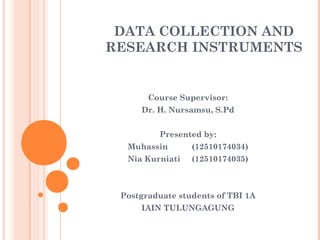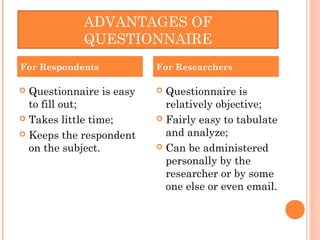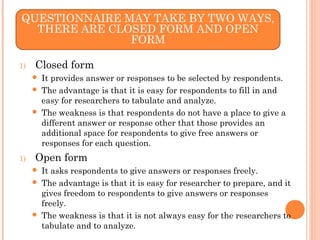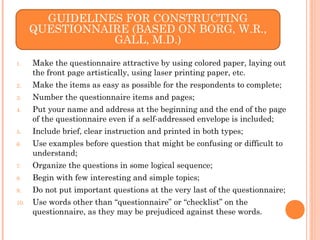This document outlines the methodology for data collection using questionnaires, interviews, and observational techniques. It provides guidelines for constructing effective questionnaires, including the advantages and disadvantages of closed and open forms, and discusses the strengths and weaknesses of interviews as data-gathering instruments. Additionally, it covers the principles of naturalistic observation and the importance of proper planning and execution for reliable data collection.
























